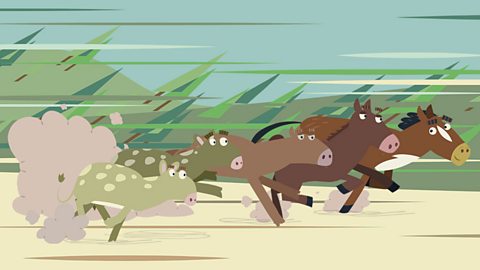Find out how conformers and regulators maintain their body temperature in different ways.
Right then children, we’ve come to the desert to find out about warm-blooded and cold-blooded animals, which are also known as regulators and conformers.
This sand lizard is a conformer, which means the temperature inside its body depends on its outside surroundings.
Here in the desert, the sand is so hot it has to keep swapping which feet it stands on so it doesn’t overheat!
If it all gets too much, it can burrow under the sand to where it’s cooler.
I think it’s time for us to get out of the hot sun as well.
Come on, get a move on!
Down here in the Antarctic, it’s so cold that it’s mainly only warm-blooded regulators that can live here.
These animals are able to keep their bodies about the same temperature.
But how do they do it?
Insulation is one way.
This seal, for example, has a thick layer of fat called blubber under its skin.
This acts like a blanket for its insides.
Seals also keep warm through something called heat exchange.
Warm blood flowing through their arteries passes alongside cold blood flowing through their veins.
The warm blood gets cooled down so it doesn’t lose too much heat when it reaches less insulated areas like a seal’s flippers or tail.
The cold blood coming back gets warmed up so it doesn’t chill the inside of the seal’s body too much.
Insulation and heat exchange help keep these penguins warm too.
They also huddle together to share body heat, swapping places to take it in turns to face the cold weather, or stay cosy in the middle.
Ah…
I think I’ve got snowed in.
Help me out, would you kids?
Oh…
I knew I should have worn leg warmers.
More on Body systems
Find out more by working through a topic
- count13 of 25

- count14 of 25

- count15 of 25

- count16 of 25
